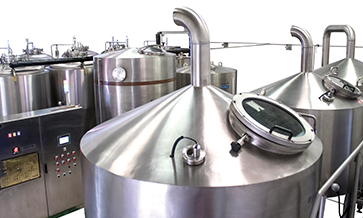The research and development team at Chicago’s Omega Yeast Labs has made a ground-breaking discovery that links hazy beer to a specific gene, HZY1. Already known for its genetically modified yeast strains that highlight increased tropical and fruity flavours in beer fermentation, Omega Yeast’s latest breakthrough adds another tool to the brewers’ work benches, allowing them to further customise their beer offerings.
As the American beer consumer’s palate shifted toward more hop-forward beers such as IPAs, many brewers saw additional haze forming in their beers when dry-hopping, or adding additional hops in the fermentation process. This haze phenomenon became practically synonymous with flavourful, hoppy beer, and has led to a massive surge in interest in these “hazies” and their fruit juice-like aromatics.
Throughout this time, research into beer haze has focused on malt and hops without considering or often neglecting the role yeast could be playing. In the R&D lab at Omega Yeast, the team regularly conducts experiments to see how different yeast strains act when subjected to various conditions, such as swapping out recipe ingredients or altering temperatures during fermentation.
‘Haze-positive’
“We always pay close attention to what we are seeing in our experiments,” says Dr. Laura Burns, Omega Yeast’s Director of Research and Development. “In one case, we were using a simple experiment to mimic IPA fermentations, and we found that certain yeast strains would promote haze when others did not.”
By observing these fermentations, Laura and her team discovered that some strains would create brilliant, non-hazy beer, while others would create beer with a milky, turbid haze.
They tested variations in the recipe as well as the dry hop timing and the results were consistent: the samples that finished hazy were always from a group of yeast strains that the team deemed “haze-positive.”
Given that traits like fruity and spice-like flavours, sweetness and dryness in a beer’s finish, and varying levels of alcohol output are all traits determined by yeast genetics, it stood to reason that haze could also be specified by the genetics of haze-positive yeast. These developments were what set the team on the hunt for a genetic link.
“When it came to haze, everyone in the craft beer industry was focusing on malt and hops, and we had a very clear result that certain yeast strains were promoting haze in IPAs,” adds Burns.
Important role
Using a combination of classic genetics and next-generation sequencing, the R&D team was able to identify genetic changes to a novel gene that made haze-positive strains hazy. The Omega Yeast team has named the gene HZY1, for its newly discovered role in promoting beer haze.
Using gene-editing technology known as CRISPR (clustered regularly interspaced short palindromic repeats), Laura and her team were able to delete this gene from haze-positive strains, and beers fermented with these strains were no longer hazy.
“Brewing yeast has been so extensively studied, we never thought we would be the first to identify a new gene for haze,” Laura says. “Now that we have a gene, there’s no denying that yeast plays an important role in promoting haze in beer.”
For the broader beer world, this discovery blurs the line between yeast strains that could be used for New England IPAs and traditional West Coast IPAs, allowing the exploration of new flavour combinations.
Brewers will be able to create new flavour profiles and enrich their brand portfolios with beers that look and taste different from anything they have been able to brew until now. (Courtesy: Omega Labs).














